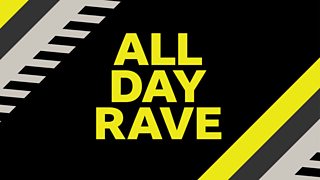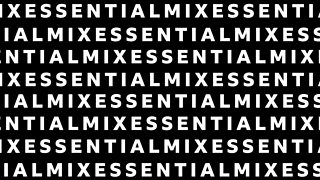30 tracks that shaped dance music
By Jack Needham. Updated 5 June 2020.

Stay 91热爆, Rave Safe this Saturday (5th June) sees 6 Music pay homage to dance music over the ages, with a tribute to Studio 54 and disco on Radcliffe and Maconie (from 8am), special mixes from Gilles Peterson (2pm) and Craig Charles (6pm) highlighting black contributions to dance music history, plus much more.
Highlights include Gilles Peterson's virtual tour of the club in Club Unity, a disco-infused Studio 54 mix from Radcliffe and Maconie, while Craig Charles plays out the DJ set he would have been debuting in Brixton if venues remained open.
Below, we take a closer look at 30 essential tracks that have shaped dance music from '88 onwards.
A Guy Called Gerald - Voodoo Ray (1988)
How it changed dance music:
With the Second Summer of Love in full swing, a record came along in 1988 that soundtracked the era-defining times; A Guy Called Gerald's Voodoo Ray.
The Moss Side DJ's hit was ever-present at the now-iconic Haçienda club and gave the city a classic. It was so huge that the song, which sampled Peter Cook and Dudley Moore and was recorded over the course of just two days, only took a single day to sell out its initial run of 500 copies.
Voodoo Ray wasn’t just big in the Madchester scene either - across the UK the track’s thumping bassline and transfixing melody got clubbers moving, marking possibly the first acid house mega-hit.
Who it influenced:
A Guy Called Gerald's classic was ubiquitous in the late-80s, inspiring everyone from Leftfield and Orbital to Happy Mondays and Sasha, who told Clash magazine: "It was the record at the Haçienda, it was one of those defining records. There were a few records that really defined that 88 to 90 period and they were really hard to get hold of and I remember just craving those records so much that when I finally got hold of them, I wore them out.”
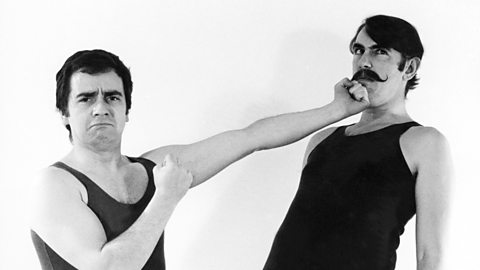
How did Pete and Dud evolve into Acid House anthem Voodoo Ray?
The journey taken from Derek and Clive sketch to Brass Bands via the Hacienda dancefloor.
Inner City - Big Fun (1988)
How it changed dance music:
After Big Fun hit the UK top ten in 1988, Detroit's Kevin Saunderson, the man behind Inner City alongside vocalist Paris Grey, became known as ‘The Elevator’ for lifting dance music up from the underground.
As one of house music’s most infectious crossover hits Big Fun was a hit for young dancers and older ravers alike. It transformed dance music from something found in club basements to a genre that could move an entire nation.
Who it influenced:
Big Fun showed that dance music could be chart friendly, inspiring Deee-Lite, N-Joi and a host of Detroit producers and DJs.
808 State - Pacific State (1989)
How it changed dance music:
Just as Ibiza became the birthplace of the superclub, 808 State’s Pacific State (which credits A Guy Called Gerald’s Gerald Simpson - then a member of the band - as a co-writer) helped shape the White Isle into a dance music paradise.
“They started playing it as the last tune of the night at the Haçienda,” Graham Massey later . “[Then Radio 1 DJ] Gary Davies picked up on the white label in Ibiza... Once that happened, we had a mainstream hit.”
Fusing jazz, downtempo house music, some ambient bird sounds and the unmistakable kick of the Roland 808 drum machine, Pacific State, an ode to things far more exotic and tropical, would set a benchmark for what would become known as Balearic.
Who it influenced:
An entire Spanish island; DJs from Alfredo to Carl Cox all took dancers to a place on the sea with Pacific State.
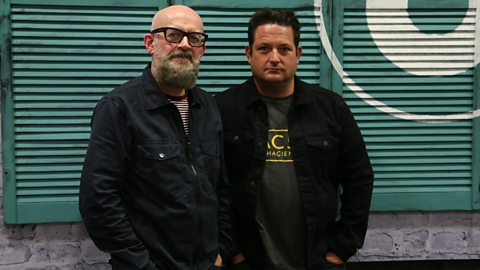
What made Hacienda legend Graeme Park so sure house music would take over the world?
6 Music celebrates 30 years of UK Club Culture since the Second of Summer of Love.
LFO - LFO (1990)
How it changed dance music:
Club classics are made on the dancefloor, and that’s certainly true for the self-titled breakout of LFO.
Produced by the Leeds duo Gez Varley and the late Mark Bell, LFO is four-minutes of mind-dizzying electronica that still sounds like the future to this day, reworking the sci-fi sound of early-Detroit techno for the UK dance community.
Who it influenced:
LFO helped shape the pivotal sound of one of the UK’s most important labels, Warp Records, in turn paving the way for Boards of Canada, Vitalic and Aphex Twin.
Future Sound of London - Papua New Guinea (1991)
How it changed dance music:
As acid house’s peak began to curtail, clubbers across the UK were looking for something new, and that came in the breakbeats of Future Sound of London’s Papua New Guinea, which blended techno with ambient sounds and transported listeners to a place on the sea.
"I don't think it's the best piece of music I've ever written, but it just hit a mindset," FSOL’s Garry Cobain has since said. Regardless, this euphoria-drenched number can still bring a nostalgic tear to the eye of any old school raver to this very day.
Who it influenced:
Papua New Guinea set a precedent for what would soundtrack the 90s, from the blissful pop of Moby to the experimental electronica of Autechre.
Orbital – Belfast (1991)
How it changed dance music:
Orbital’s classic track Belfast was named as such after a monumental gig the Hartnoll brothers played in Northern Ireland in May 1990, set against the backdrop of The Troubles, a trip that had a lasting impact on the duo.
During their time in Belfast, Orbital witnessed how dance music was helping to bridge the divide. They decided it was only right to dedicate the track to the young clubbers in the city.
The classic song not only proved that electronic music could go beyond the clubs and fields, but most importantly, showed it transcended differences, something that dance music has always been all about.
Who it influenced:
Belfast helped kick start a trance revolution, and gave inspiration to Photek, Pantha du Prince and more.
The Orb - Little Fluffy Clouds (1991)
How it changed dance music:
After hardcore sent heads into a spin, it was time for chillout. Cue The Orb’s Little Fluffy Clouds, which soundtracked countless sunrise mornings in the early 90s and introduced the transcendence found in ambient music for a generation who until that point were brought up on rave.
Who it influenced:
Little Fluffy Clouds became an Ibizan staple, bringing us sunlit ambience and inspiring Air and Groove Armada to boot.
Gat Décor- Passion (1992)
How it changed dance music:
The uplifting piano-house that is Gat Décor’s Passion is not only a complete masterpiece but can be seen as one of the first truly British house tracks.
The song has gone through several incarnations too, initially released in its Naked Mix form, a bootleg remix then borrowed vocals from Do You Want It Right Now? by Degrees of Motion, which led to singer Beverley Skeete re-recorded the vocals for a new version, which peaked at number six in the UK charts during 1996.
Who it influenced:
Passion helped introduce an era of vocal house, something that would be mirrored in Fatboy Slim, N-Trance, Floorplan and more.
M-Beat feat General Levy – Incredible (1994)
How it changed dance music:
Jungle was an influential, but fringe, part of UK music culture in 1994, but M-Beat’s Incredible is a record that helped change all that.
General Levy’s unmistakable vocals still resonate from club walls today, and if you ever step foot into Notting Hill Carnival, expect to be greeted by a wave of ravers chanting “Jungle is massive!”
Who it influenced:
Incredible brought jungle to the mainstream, and its influence can even be seen in grime. In 2015, General Levy was joined by Dizzee Rascal, JME and Lethal Bizzle for his 1Xtra takeover, showing just how much his influence has spread through the eras of UK music.
Goldie - Inner City Life (1994)
How it changed dance music:
Goldie has become something of a national treasure - and with good reason. Breaking out with Inner City Life in 1994, Clifford Joseph Price, MBE’s bittersweet love letter to the grittier pockets of the UK launched the artist’s career and earned him an instant classic.
Inner City Life rewired British pop music and led the star to collaborate with everyone from Björk and David Bowie.
Who it influenced:
Inner City Life shone a bright light on drum 'n' bass, giving inspiration to Andy C, Portishead and Massive Attack.
Warning: Third party content may contain adverts
• Goldie guests on Nemone's Electric Ladyland for Stay 91热爆, Rave Safe
Underworld - Born Slippy .NUXX (1995)
How it changed dance music:
As club records go, Underworld's Born Slippy .NUXX has probably induced more arms-in-the-air, eyes-closed moments than any on this list.
Produced by Karl Hyde and Rick Smith and made famous by Trainspotting, Born Slippy .NUXX, with its transcendent synths and contorted vocals, took the emotions of a jilted generation and turned them into an anthem of the UK.
The track remains just as stirring and iconic, and was even used again in the trailer for 2017 sequel film, T2 Trainspotting.
Who it influenced:
Born Slippy was a curveball dance hit born during the peak of Britpop, inspiring the likes of The Prodigy and Leftfield during a time when bands began to conquer the charts again.
Björk - Hyperballad (1996)
How it changed dance music:
Björk’s genius is pretty much a given by now, but the Icelandic musician's 1996 wandering daydream Hyperballad took her singular brand of experimental pop music and fused several electronic influences (acid house, drum 'n' bass, folktronica), fixating dance fans as well as the masses.
It was a vision of a sonic future and proved you don’t need to change your sound or self to be accepted.
Who it influenced:
The ultimate alternative pop star, Björk has since had an influence on everyone from Radiohead to Avalon Emerson and Death Grips.
The Chemical Brothers - Block Rockin Beats (1997)
How it changed dance music:
While the likes of Aqua and Hanson ruled the charts in 1997, The Chemical Brothers’ Block Rockin Beats quietly changed music for the better.
Not only was the song an undeniable earworm, but it took the art of sampling to a new level - borrowing its drums from Bernard Purdie and its vocals from US rapper Schoolly D. There have even been suggestions that the track covertly samples Pink Floyd too.
Block Rockin Beats also paved the way for further fusion of alternative dance music and hip-hop influences, ushering in an era that would be dominated by Fatboy Slim, Mr Scruff and more.
Who it influenced:
The Chemical Brothers’ big beat has influenced a diverse array of artists, from Daniel Avery to Kylie Minogue. The duo even remixed the latter’s 2009 record Slow.

The Chemical Brothers discuss their influences
The Chemical Brothers Tom and Ed talk about their influences with Lauren Laverne.
Roni Size, Reprazent - Brown Paper Bag (1997)
How it changed dance music:
By 1997 dance music was a bit more polished than it had previously been, but merging jazz, drum & bass and hip-hop, Roni Size and his Reprazent collective’s Brown Paper Bag brought some grit back to the genre and helped bag the artist a Mercury Prize in the process.
“We wanted to make music that sounded like the future… I chopped them up on the sampler and suddenly there was a song,” Size later , recalling how he came up with the Dynamite MC-featuring track, making the art of soundtracking the future sound very easy indeed.
Who it influenced:
Roni Size’s cut-and-paste sampling techniques gave inspiration to Massive Attack, DJ Shadow and Mr Scruff to name just a few.
Roy Davis Jr ft Peven Everett - Gabriel (1997)
How it changed dance music:
Before garage hit the big time from the early-00s, there was Roy Davis Jr’s Gabriel, originally produced as a house record and later becoming a foundation for UKG. It was club music with soul, soundtracking many an inner-city rave.
Who it influenced:
An entire generation of UK garage acts, becoming a reference point for DJ Luck and MC Neat and DJ EZ and the framework for UK funky and bassline.
The Prodigy – Firestarter (1997)
How it changed dance music:
Ever since Charly in 1991, The Prodigy were dishing out bombastic singles that never bowed down to record label pressure but still managed to conquer the charts.
Firestarter saw the late, great Keith Flint promoted from the band’s dancer to rave’s new rebel frontman. The track knocked Take That’s How Deep Is Your Love off the top of the UK Singles Chart in March 1996 and remains a terrifying, zeitgeist-defining anthem.
Who it influenced:
Firestarter brought punk to the dancefloor, bringing the harder influences of rave and Moving Shadow records to the mainstream.
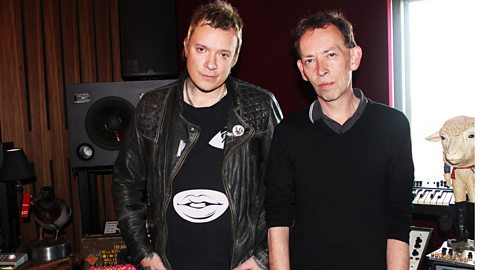
Liam Howlett of the Prodigy - Exclusive Interview
Steve Lamacq hosts a special interview with Liam Howlett of the Prodigy.
Aphex Twin – Windowlicker (1999)
How it changed dance music:
From the warped mind of Richard D James, aka Aphex Twin, Windowlicker is arguably the strangest crossover hit ever to reach the public consciousness, with its walls of distorted bass and groans somehow turning this abstract record into alternative club classic.
The Chris Cunningham-directed video was as memorable and maddening as the track itself, with James’ contorted face petrifying pre-watershed audiences. It still haunts many to this day.
Who it influenced:
Introducing the world to the divisive genre of IDM (intelligent dance music), Windowlicker had a big impact on Squarepusher, Autechre and even contemporary classical composers like Philip Glass.
• Listen to The Cult of Aphex Twin
Laurent Garnier - The Man With The Red Face (2000)
How it changed dance music:
One year before Daft Punk would put French house on the map, Laurent Garnier released The Man With The Red Face, an orchestral dance track that fused acid jazz with techno.
How did that combination originally come about? Well, Garnier has that he was booked to play a jazz festival and thought it would be rude to solely play techno music. Thus, The Man With The Red Face was born.
Who it influenced:
It became a basis for a new school of DJ, becoming a classic for particularly Berlin-based artists like Âme, Dixon, Ben Klock and Booka Shade.
Daft Punk - One More Time (2001)
How it changed dance music:
When One More Time hit the airwaves, the era of the superclub was in full dominance. Cue two robots who yearned to be born in Chicago but instead merged the sound of vintage soul and Frankie Knuckles with an indescribable yet insatiable French touch.
One More Time glistened like Studio 54 had been transported to Paris and house music found its second coming in the form of French house. Fellow countrymen Cassius, Busy P, Étienne de Crécy and the eponymous label that is Ed Banger records would all find their inspiration in Daft Punk’s breakout hit.
Who it influenced:
Kanye West, Pharrell Williams, Phoenix, LCD Soundsystem... the list is endless.
High Contrast - Racing Green (2004)
How it changed dance music:
Drum 'n' bass was built on DIY ethos, but High Contrast’s Racing Green took the genre to new artistic heights. Brimming with orchestral strings and punching kick drums, Racing Green helped introduce soul into a genre known for its toughness.
Who it influenced:
Racing Green is a record that could only be made in the UK and became a blueprint for Chase & Status, Nero and The Streets.
Soulwax - E Talking (2004)
How it changed dance music:
Belgium gave us the hardstyle genre of EBM (Electronic body music), but it was Ghent natives Soulwax who brought it to the mainstream arena and then expanded on it exponentially.
The two Dewaele brothers, famous for their cross-genre finesse, went on to merge punk, electro, techno, indie and classic rock to create something that can’t be pigeonholed.
Who it influenced:
E Talking made dance music trendy with skinny-jeaned indie kids and kickstarted a new era of dance music where bands and producers began to entwine.
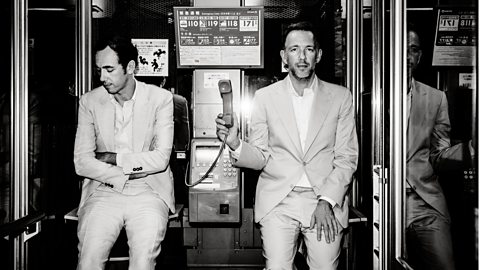
How to record a whole album in one take - Soulwax share their secrets
David and Stephen Dewaele recorded all twelve tracks on their latest record in one go.
Justice Vs Simian - We Are Your Friends (2006)
How it changed dance music:
If New Order’s Blue Monday was the biggest dance/indie crossover of the 80s, then the Justice remix of Simian’s We Are Your Friends was the closest equivalent for the 00s. It turned a scrappy indie jam into a slick but unwieldy dancefloor filler.
The resulting rework - which was made simply using a sampler, sequencer and synthesizer - kept the original’s chaotic DIY quality but added some much needed French funk. It was a staple of club nights across the UK and beyond. In fact, it’s still not a proper indie disco without hearing We Are Your Friends.
Who it influenced:
It turned Simian into Simian Mobile Disco and helped birth the brief but generation-informing era of new rave. Without this track, we may not have witnessed the likes of Erol Alkan, Late of the Pier and 2007 Mercury Prize winners, Klaxons.
Burial – Archangel (2007)
How it changed dance music:
Before dubstep became shorthand for wobbly remixes uploaded to YouTube, Archangel - produced by the mysterious Burial - marked the evolution of Jamaican dub and jungle and became a haunting score to modern life.
In 2007, called Untrue, the album that spawned Archangel, "the most important electronic album of the century so far”, and, over a decade on, the claim still holds weight.
Who it influenced:
Archangel became a precursor for post-dubstep acts like James Blake, The xx and Mount Kimbie, while even pop stars like Britney Spears and Taylor Swift have incorporated Burial-esque sounds into their music.
La Roux - In For The Kill (Skream Remix) (2009)
How it changed dance music:
Before dubstep broke through to the mainstream, it existed in a relative obscurity in south London warehouses, but Skream’s monolithic remix to La Roux’s In For The Kill changed all that. Perhaps even more impressive is the fact that the Croydon producer was just a teenager at the time.
Who it influenced:
Skream’s smash remix of La Roux’s hit helped the passing of the torch from new rave to dubstep, introducing the wider public to acts like Magnetic Man in the process.

La Roux - Interview
Elly Jackson, aka synth-popster La Roux talks to Stuart about her new album.
Caribou – Sun (2010)
How it changed dance music:
Dance music can often be characterised by 4/4 rhythms and arpeggios, but with Sun, Dan Snaith of Caribou tore up the rulebook, showing listeners that psychedelia has a place on the dancefloor.
Who it influenced:
Sun brought joy back to festival fields, influencing the sound of everyone from Tame Impala and Jon Hopkins to Four Tet and Floating Points.
Julio Bashmore - Au Seve (2012)
How it changed dance music:
Bristol’s relationship with electronic music is rightfully lauded, and the focus came back to the West Country with Julio Bashmore’s Au Seve in 2012. Au Seve was the precursor to a fresh incarnation of house music that has since inspired countless bedroom producers.
Who it influenced:
Au Seve introduced us to a new take on UK house music, which would lead to Disclosure, Bicep and more.
Disclosure ft Sam Smith - Latch (2012)
How it changed dance music:
With its sultry tones and sincere lyrics of love, Latch is a modern ode to the heartfelt house music of Frankie Knuckles and Joe Smooth. It was inescapable for several years but never grew old.
Coinciding with the emergence of EDM in the US, the song turned two brothers from Surrey into festival headliners. It also introduced the world to one Sam Smith, who has done rather well for himself since this early star turn.
Who it influenced:
Latch acquainted Chicago house to a new audience and helped take dance music to new heights as a live experience. From Las Vegas to festivals around the world, live dance music is booming more than ever.

Stuart Maconie speaks to Disclosure
Stuart chats to Disclosure about their Grammy Award-nominated album.
Daniel Avery - Drone Logic (2014)
How it changed dance music:
Daniel Avery’s Drone Logic pulsates with tireless energy, harking back to the finest work of The Chemical Brothers, Drexciya and Nine Inch Nails. It proved that UK club music can nod to the past while still forging new paths for the future.
Who it influenced:
With its acid-tinged bassline and gargled riffs, Drone Logic laid the groundwork for the likes of Ghost Culture and Kelly Lee Owens.
Bicep - Glue (2017)
How it changed dance music:
From bloggers writing about dance music to being among the most exciting artists around, Bicep’s rise has been meteoric.
They bubbled on the underground for years, but Glue eventually found its way into the public conscious, blending breakbeats, ambient chords and acid house.
Who it influenced:
Referencing the transcendental house music of the early-90s, Glue brought big room dance music to new audiences, and helped producers like Ross From Friends, Mall Grab and Project Pablo break through.

Bicep: The joy of music discovery
The Belfast production duo on the tunes that have shaped their lives and creative output.
Peggy Gou - It Makes You Forget (Itgehane) (2018)
How it changed dance music:
It’s difficult to determine whether a recent hit will be a long lasting favourite, but Peggy Gou’s It Makes You Forget (Itgehane), which sees the Berlin-based artist singing in her native Korean, certainly has all the makings of a future classic. Since its release, it's acted as something of a launchpad – she's curated her own festival in London, put her stamp to a DJ-Kicks compilation, and established her own label, Gudu Records.
Check back in a few years’ time, and we’re sure we’ll still be listening to it, alongside more recent tracks Starry Night and Han Pan.
Who it influenced:
It’s perhaps too early to say, but alongside names like The Black Madonna, Honey Dijon and more, Peggy Gou embodies an important change for dance music, inspiring more and more female producers and breaking down gender glass ceilings in an industry that’s long been overly male-dominated.
-
![]()
All Day Rave on 6 Music
6 Music celebrates dance music across the decades and club culture from around the globe.
Dance Mixes on 91热爆 Sounds
-
![]()
Radio 1's Essential Mix
The world's biggest DJs on the world's biggest decks.
-
![]()
Diplo & Friends
Diplo and friends exclusively in the mix for 1Xtra and Radio 1.
-
![]()
Solo Rave
Some of world鈥檚 best DJs have put together their favourite songs to rave to.
